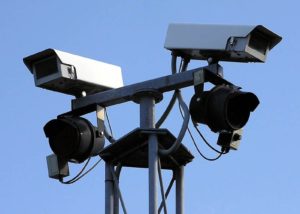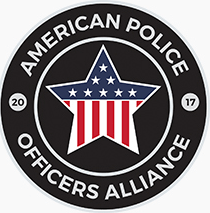Our examination of hot button issues impacting police work (see Police Use Body Worn Video, A Brief History) continues with another that has come up recently, the use by law enforcement officers of facial recognition systems (FRS), specifically a system provided to police by Amazon, called Rekognition.
Police have been using FRS for several years, but in May, 2018 a group of nearly 3 dozen non-profits wrote to “demand that Amazon stop” giving police access to the system. While those groups have expressed concern about its use, police and Amazon themselves believe the benefits to society outweigh the risks, and a contributor to an independent study by Georgetown Law school that has proposed commonsense guidelines for FRS has commended several local police departments for their responsible use of the technology.
The Amazon Facial Recognition Debate
FRS is another in a long line of technologies that were adopted and are regularly used by law enforcement agencies to increase efficiency and results including fingerprinting databases, automated license plate recognition, and audio sensors which can detect gunshots and alert police. Simply put, FRS works by comparing an image in a photograph or video to a database of images that are associated with identifying information. Software is used that translate identifying features that can’t be altered, such as the measurement of the distance between pupils, into data. That data is compared to the information in the database using algorithms to find a match.
Originally developed in a government funded program in the 1960s, the software that captures identifying features and the algorithms that perform the search have advanced to the point where the technology can work with 66-90% accuracy, with some systems working in real time. Because it is a relatively new technology, local Police departments access these systems in different ways, with some departments taking photos using iPads and then wirelessly sending the information to a database and waiting for results, similar to searching for information on a license plate. Police departments in Florida began using facial recognition systems in 2005, though not with the Rekognition software that Amazon provides. As of 2018, Orlando Florida, and Washington country Oregon are using Amazon Rekognition.
Efficiency is the most often cited benefit of FRS to support police work. FRS can accelerate searches for suspects or finding lost children and quickly alert police if someone just arrested is wanted in any other case. When images or video of a terrorist event are available, Police use FRS to identify suspects involved. FRS can be used to exonerate suspects in cases of mistaken identity or to uncover identity fraud perpetrators.
At a federal level, the FBI is using FRS as part of their Next Generation Identification (NGI) program and the Department of Homeland Security is using FRS to help identify abused or exploited children in an effort to recover them. Outside of law enforcement, schools in New York and Arkansas are recognizing the benefits of the technology and are using cameras with FRS to spot sex offenders, gang members, or fired employees who enter school grounds.
 In their letter to amazon, the non-profits outlined concerns that police would misuse the technology and violate the rights of citizens, while in a press release Amazon has stated that “There has been no reported law enforcement abuse of Amazon Rekognition.” Additionally, Amazon noted that “[w]e also have an Acceptable Use Policy (“AUP”) that prohibits the use of our services for ‘[a]ny activities that are illegal, that violate the rights of others, or that may be harmful to others.’ This includes violating anybody’s Constitutional rights relating to the 4th, 5th, and 14th Amendments – essentially any kind of illegal discrimination or violation of due process or privacy right.”
In their letter to amazon, the non-profits outlined concerns that police would misuse the technology and violate the rights of citizens, while in a press release Amazon has stated that “There has been no reported law enforcement abuse of Amazon Rekognition.” Additionally, Amazon noted that “[w]e also have an Acceptable Use Policy (“AUP”) that prohibits the use of our services for ‘[a]ny activities that are illegal, that violate the rights of others, or that may be harmful to others.’ This includes violating anybody’s Constitutional rights relating to the 4th, 5th, and 14th Amendments – essentially any kind of illegal discrimination or violation of due process or privacy right.”
Guidelines are being established as trial use of the technology is underway, with several police departments working to responsibility roll out FRS. The Seattle Police department has elected to ban real-time facial recognition monitoring live video feeds and developed internal guidelines that were informed by consultation with the Washington branch of the American Civil Liberties Union. San Francisco police has strong accuracy requirements for their providers of FRS, and the San Diego police department worked with local government to receive legislative approval to use FRS.
This technology is not only already available, but in much greater use outside of law enforcement with 1.65 billion Facebook users contributing to that company’s FRS every time they upload a photo. Apple’s newest iPhone, Google products, and Snapchat are all using FRS widely. Adoption by police would safeguard those same citizens who use FRS for recreation. In the press release responding to the concerns they received, Amazon stresses that they “believe it is the wrong approach to impose a ban on promising new technologies because they might be used by bad actors for nefarious purposes in the future. The world would be a very different place if we had restricted people from buying computers because it was possible to use that computer to do harm… Through responsible use, the benefits have far outweighed the risks.”
FRS improves and eases law enforcement overhead, increases safety for police and the communities they serve, and brings real criminals to justice. As long as privacy and accuracy issues are addressed in a way that are amenable to the public it should become a standard tool for law enforcement.








